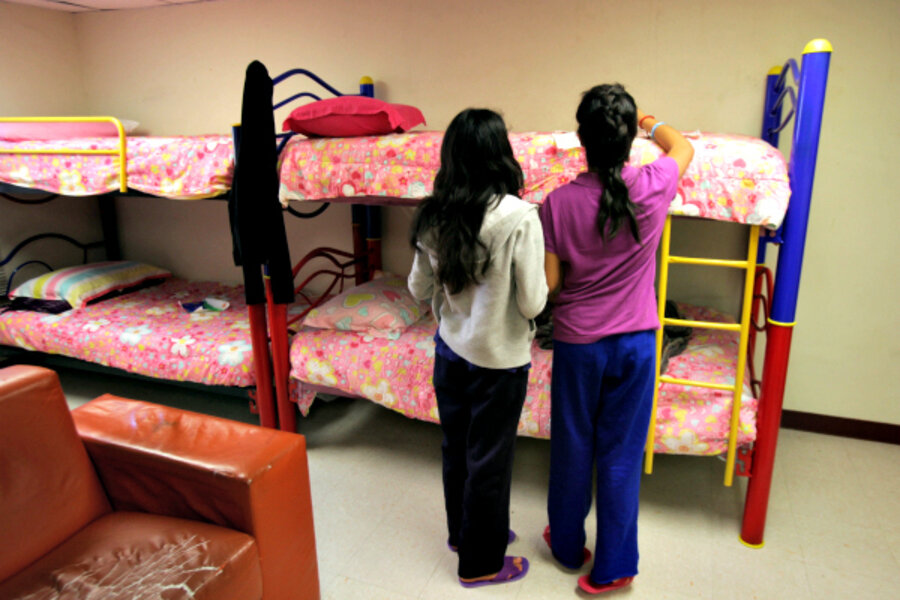Children on the doorstep
Loading...
Someone leaves a child on your doorstep and rings the bell. You don’t just slam the door and turn away. You take care of the child, at least until a more permanent home can be found.
But then a second child arrives, and a third, and a fourth. Times are hard, and more and more children nearby are being driven from their homes by crime and poverty. You wonder if you’ve gotten a reputation as a softhearted neighbor.
But you also know you still have to help.
Some 60,000 children, unaccompanied by any adult, are expected to pour into the United States illegally this year, the Obama administration estimates, 10 times the number estimated as recently as 2011. Since Oct. 1, an unprecedented 47,017 unaccompanied children have been caught trying to cross the Southwestern border of the US alone.
The number has leapt so quickly that it has overloaded the ability of the US to respond. The White House and the United Nations have both declared the influx a humanitarian crisis.
Many of the children don’t come from Mexico but from farther south in Honduras, El Salvador, and Guatemala. They often arrive at the border by bus or by jumping on freight trains headed north. They pay “coyotes” – sometimes members of criminal gangs – to help them sneak across the US border. An unknown number don’t make it and perish.
The improving US economy accounts for a part of the general influx of undocumented immigrants of all ages coming to the US seeking better lives.
But why so many children, and why now? What kind of parents would send their offspring alone on such a perilous journey?
Some parents are already working in the US and desperately want their children to join them. Other youngsters are escaping wretched home lives and abuse. In many cases they are choosing to try to run away to the US rather than be forced to join one of the many criminal gangs that control neighborhoods in their homelands.
Some observers suggest that the US has earned a reputation in Latin American countries for being “soft” on undocumented women and children, a policy, they say, that only encourages more of them to cross the border. Some of the children are being allowed to join family members already in the US legally. Others are being passed along to private aid organizations for temporary shelter.
Politicians in both US political parties, as well as private aid agencies, wonder how the US will be able to afford to care for such an influx of vulnerable children and, in some cases, their mothers. The cost of dealing with children entering the US illegally is expected to rise to $2 billion in 2015, up from $868 million in 2014, the Obama administration estimates.
It is in the nature of Americans – as well as in American self-interest – to want to help improve, through aid and diplomacy, the economic and political situations south of its border so that fewer desperate individuals, including children, will try to cross into the US illegally. The US can also try to put a stronger fence around its “yard” to keep unwanted immigrants and their problems outside.
But once a child is here, on the doorstep, Americans know that bringing that child inside and providing help is their only choice.





